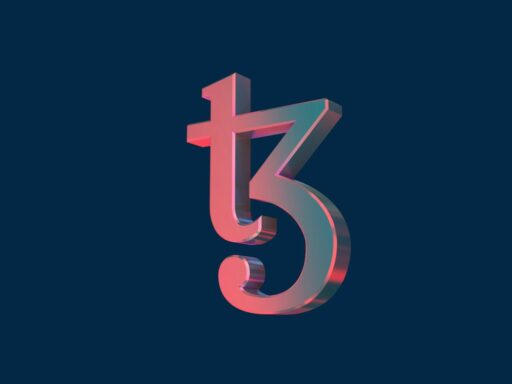In the article ‘Exploring the Synergy Between Blockchain Innovation and Bitcoin’s Rise,’ we delve into the profound influence of blockchain technology on the financial landscape and how Bitcoin’s emergence as the first cryptocurrency has set the stage for a revolution in digital transactions. We examine the interplay between AI and blockchain, the expanding applications of cryptocurrencies, and the foresight into a future driven by these technological synergies. Angelo Babb, a thought leader in the field, provides valuable insights into how these innovations are not just reshaping industries but also driving global progress.
Key Takeaways
- Blockchain technology is a game-changer for global finance, offering a decentralized approach that enhances security and transparency.
- Bitcoin’s rise can be attributed to its first-mover advantage and the novel blockchain technology that underpins it, fostering a new era of digital currencies.
- The convergence of AI and blockchain is unlocking new possibilities for efficiency and innovation, with GPUs playing a crucial role in optimizing blockchain performance.
- Cryptocurrency applications are diversifying rapidly, with DeFi and NFTs leading the charge, signaling a shift in how traditional assets are viewed and utilized.
- The synergy between AI, blockchain, and cryptocurrencies like Bitcoin is setting the stage for a more equitable, inclusive, and sustainable technological future.
The Revolutionary Impact of Blockchain on Global Finance

Decentralization: A New Paradigm in Financial Transactions
The advent of blockchain technology has ushered in a new era of financial transactions, characterized by decentralization and open-source nature. Unlike traditional systems, blockchain’s distributed ledger operates across a multitude of nodes, eliminating single points of failure and enhancing security through cryptographic techniques.
The DeFi ecosystem is a prime example of this shift, offering services such as lending and borrowing directly between users, facilitated by smart contracts. This not only simplifies the process but also introduces a level of automation and efficiency previously unattainable.
The role of blockchain in finance is not just transformative; it’s revolutionary. It redefines our interaction with money, making financial services more accessible and inclusive.
Customization options in private blockchain platforms allow for fine-tuning of parameters like block time size, which, along with legal contracts, can operate in synergy with decentralized technologies. The result is a financial landscape that is more resilient, transparent, and equitable.
The Role of Blockchain in Enhancing Financial Security and Transparency
Blockchain technology has revolutionized the way we perceive and manage financial security and transparency. Institutions can now trace and verify transactions in real-time, leading to transformative applications across various sectors. The integration of cryptographic techniques into blockchain systems fortifies transaction security, with each block carrying a cryptographic hash of the previous one, creating an immutable chain that is resistant to tampering.
Transparency is another cornerstone of blockchain, ensuring that every transaction is visible and permanent. This feature is crucial for maintaining the integrity of financial records and fostering trust among participants. The ability to trace every transaction with precision not only enhances security but also streamlines business operations, reducing costs and improving efficiency.
Blockchain’s inherent features of decentralization, transparency, and security ensure that any access to patient data is securely logged and easily auditable.
The following table summarizes the key benefits of blockchain in enhancing financial security and transparency:
| Benefit | Description |
|---|---|
| Real-time Verification | Enables instant confirmation of transactions. |
| Enhanced Security | Cryptographic hashes make altering data extremely difficult. |
| Transparency | All transactions are visible and unalterable. |
| Cost Reduction | Streamlines operations, reducing the need for intermediaries. |
| Efficiency Improvement | Automates complex business processes. |
Disrupting Traditional Banking: Bitcoin as a Catalyst
The advent of Bitcoin has marked a significant shift in the financial landscape, challenging the hegemony of traditional banking institutions. Bitcoin’s blockchain technology has introduced a new level of efficiency and security, enabling transactions that are faster, cheaper, and devoid of intermediaries. This disruption is not just theoretical; it’s practical and ongoing.
The convergence of cryptocurrency and fintech lending is crafting a new financial paradigm. It’s a world where transactions are borderless, systems are inclusive, and financial services are redefined.
The impact of Bitcoin on traditional banking can be summarized in a few key points:
- Decentralization: Unlike centralized systems, Bitcoin operates on a decentralized network, reducing bottlenecks and single points of failure.
- Transparency: The blockchain ledger promotes transparency and data integrity, fostering trust among users.
- Innovation: New financial products, such as crypto-enabled credit cards, bridge the gap between traditional and digital finance.
- Inclusivity: By bypassing traditional financial intermediaries, Bitcoin opens the doors to financial services for unbanked populations.
Bitcoin’s Ascendancy: The Power of First-Mover Advantage

Understanding Bitcoin’s Unique Value Proposition
Bitcoin’s ascent to prominence is not solely due to its technological innovation; it represents a philosophical shift towards a decentralized financial future. Its unique value proposition lies in the combination of limited supply and increasing demand, which has led to a phenomenon akin to a digital gold rush. This scarcity, akin to that of precious metals, is a fundamental driver of its market value.
The blockchain technology underpinning Bitcoin is a game-changer for the financial industry. It provides unprecedented security and transparency, characteristics that have attracted a vast user base. The decentralized nature of blockchain means that Bitcoin operates without the need for central authorities, giving users full control over their transactions.
- Decentralization: Eliminates the need for intermediaries.
- Security: Blockchain’s immutable ledger enhances safety.
- Transparency: Every transaction is recorded and verifiable.
- Limited Supply: Only 21 million Bitcoins will ever exist.
- Market Value: Driven by supply and demand dynamics.
Bitcoin’s rise is not just a testament to its technological prowess but also to the ideological appeal of a currency that operates independently of traditional financial systems. The ‘Ripple Effect’ of Bitcoin’s price movements can be seen across the entire crypto market, often leading to intensified marketing campaigns and a surge in investment interest.
How Bitcoin’s Blockchain Sparked a Cryptocurrency Revolution
Bitcoin’s emergence in 2009 was a watershed moment for financial technology. Its blockchain, a decentralized ledger, introduced a new level of transparency and security, captivating those disillusioned with traditional finance. The blockchain’s ability to facilitate peer-to-peer transactions without intermediaries was revolutionary, setting the stage for a new financial ecosystem.
The decentralized nature of Bitcoin’s blockchain not only provided a robust defense against fraud but also embodied a philosophy of financial sovereignty and inclusion.
The following list highlights the key factors that contributed to the cryptocurrency revolution initiated by Bitcoin’s blockchain:
- Decentralization: Eliminating the need for central authorities in financial transactions.
- Transparency: Providing an open ledger for all to verify and trust.
- Security: Utilizing cryptographic techniques to secure transaction data.
- Limited Supply: Creating scarcity akin to precious metals, enhancing value.
- Community: Fostering a global network of supporters and developers.
As Bitcoin’s value soared, it captured the world’s attention, proving that a digital asset could attain real-world value. This success inspired a wave of innovation, leading to the creation of numerous cryptocurrencies and blockchain applications, each aiming to solve unique challenges within and beyond the financial sector.
The Societal Implications of a Decentralized Currency
The advent of Bitcoin introduced a radical shift in how currency and financial transactions are viewed and handled globally. Decentralization has emerged as a cornerstone of this transformation, challenging the traditional, centralized financial systems and offering a new level of autonomy to individuals.
- High Centralization of Mining and Wealth: Despite the decentralized ideal, the reality shows a concentration of mining power and wealth, echoing the ‘1% problem’ of traditional economies.
- Central Bank Digital Currencies (CBDCs): The emergence of CBDCs signifies a bridge between the old and new, potentially streamlining transactions while retaining state control.
- Regulatory Evolution: As the cryptocurrency landscape matures, regulatory frameworks are evolving to provide stability and protect users.
The promise of a decentralized currency extends beyond mere financial transactions; it embodies a shift towards a more inclusive and equitable economic participation. The true societal impact of Bitcoin and its underlying blockchain technology lies in its potential to empower individuals, reduce systemic inefficiencies, and foster a more transparent economic environment.
Synergizing AI and Blockchain for Future Innovations

The Convergence of AI and Blockchain Technologies
The fusion of AI and blockchain is forging a new frontier in technological innovation. Blockchain’s robust security and transparency features, combined with AI’s predictive prowess, are revolutionizing various sectors. This synergy is particularly evident in intelligent infrastructures, where it enhances supply chain optimization and energy management.
The integration of these technologies is not just about technological advancement but also about creating a more equitable and prosperous future.
By harnessing AI’s ability to analyze extensive datasets and uncover hidden patterns, blockchain systems can be significantly optimized. This convergence is paving the way for groundbreaking research and applications that promise to transform industries and drive global innovation.
- AI’s data analysis and decision-making capabilities
- Blockchain’s immutable record-keeping and decentralized nature
- The potential for enhanced efficiency and automation in blockchain operations
- The role of AI in forecasting and managing intelligent infrastructures
Optimizing Performance: The Role of GPUs in Blockchain
The integration of Graphics Processing Units (GPUs) into blockchain technology has been a game-changer for performance optimization. GPUs have become the backbone of mining operations, providing the necessary computational power to solve complex cryptographic puzzles efficiently. Their ability to execute operations simultaneously has dramatically accelerated the resolution of these challenges, making them indispensable in the blockchain ecosystem.
- GPUs are effective for parallelizing hash calculations in blockchain networks.
- They contribute computational power and speed for transaction validation and consensus mechanisms.
- GPUs are pivotal in enhancing the transaction throughput of blockchain networks.
- The adaptability of GPUs allows for the efficient implementation of smart contracts, bolstering security and performance.
The significance of optimizing GPU information system architecture for energy efficiency in blockchain mining cannot be overstated. With the growing prevalence of blockchain technologies across industries, there is an urgent need for sustainable, secure, and efficient systems.
As blockchain applications proliferate, the demand for GPUs has surged, highlighting the need for continuous hardware and software innovation. This is not just about keeping pace with current demands but also about shaping a future where blockchain can operate at scale without compromising on energy efficiency or security.
Creating a Sustainable and Inclusive Technological Ecosystem
The integration of blockchain technology into various sectors has necessitated a focus on sustainability and inclusivity. As we explore the digital landscape, it’s crucial to consider the environmental impact of blockchain operations. The development of energy-efficient blockchain frameworks is a step towards reconciling computational demands with ecological consciousness.
The pursuit of a sustainable blockchain ecosystem is not just about energy efficiency; it’s about shaping a future where technology serves the greater good without compromising the health of our planet.
In the realm of cryptocurrencies, the exploration of various cryptocurrencies like Cryptopunks, ADA, Mana, SafeMoon, Avalanche, and Monero is pivotal. These innovations in NFTs, DeFi, and the virtual economy are reshaping our understanding of digital assets and their potential to foster a more inclusive economic environment.
To achieve this, the following points must be considered:
- Prioritizing the optimization of information system architecture for blockchain.
- Balancing technological advancements with environmental sustainability challenges.
- Influencing policies and practices to support a global, energy-efficient Proof of Work (PoW) blockchain ecosystem.
The Expanding Universe of Cryptocurrency Applications

From DeFi to NFTs: The Growth of Cryptocurrency Use Cases
The cryptocurrency landscape is undergoing a fascinating evolution, marked by a myriad of trends that are reshaping the financial and technological realms. The persistent growth of decentralized finance (DeFi), the burgeoning popularity of non-fungible tokens (NFTs), and the exploration of advanced blockchain solutions demonstrate the industry’s resilience and innovation.
The expansion of cryptocurrency use cases beyond Bitcoin is a testament to the versatility and adaptability of blockchain technology. Ethereum’s introduction of smart contract functionality has paved the way for decentralized applications (DApps) and a wide range of DeFi services, transforming cryptocurrencies from mere mediums of exchange to programmable assets capable of facilitating complex financial transactions.
- DeFi is revolutionizing traditional banking by eliminating intermediaries and offering greater financial freedom, transparency, and accessibility.
- Stablecoins aim to combine the benefits of cryptocurrency with the stability of traditional assets like gold or the US dollar.
- The use of cryptocurrency as collateral in fintech lending platforms is enabling individuals to access liquidity while retaining exposure to their crypto investments.
The integration of cryptocurrencies into various financial services is not just an innovation; it’s a movement towards a more inclusive and efficient financial ecosystem.
The Impact of Cryptocurrency on Traditional Asset Classes
Cryptocurrencies have introduced a new dimension to the valuation of assets. Unlike traditional equities, where value is often linked to company performance and economic indicators, crypto assets like utility tokens and stablecoins derive their value from a myriad of factors. These include technological advancements, economic growth potential, and unique attributes such as limited supply mechanics and robustness of underlying technology.
The influence of cryptocurrencies extends beyond their own market dynamics. They challenge the valuation models of traditional asset classes by introducing decentralized technologies and diverse tokenomics. This has led to a reevaluation of what constitutes fundamental value, considering factors external to market price, such as real-world applicability and regulatory developments.
Cryptocurrency’s impact on the global economy is multifaceted, offering opportunities for financial inclusion and introducing innovative technologies, while also presenting regulatory challenges and potential disruptions to traditional financial systems.
The relationship between cryptocurrencies and traditional assets is complex, as crypto markets feature unique assessment methods. The value of a crypto asset can be measured in fiat currency or against other cryptocurrencies, with Bitcoin often serving as a central reference point. This dual valuation system underscores the intricate interplay between crypto and traditional markets.
Blockchain Beyond Bitcoin: Emerging Trends and Technologies
As blockchain technology matures, its applications are proliferating across various sectors, signaling a shift towards a more interconnected and decentralized digital ecosystem. Blockchain’s versatility is evident as it extends its reach beyond cryptocurrency into areas such as supply chain management, digital identity verification, and smart contracts.
- Supply Chain Transparency: Blockchain provides an immutable record of transactions, ensuring product authenticity and origin.
- Digital Identity: A secure and unforgeable system for managing identities online.
- Smart Contracts: Self-executing contracts with the terms directly written into code, reducing the need for intermediaries.
- Voting Systems: Enhancing the integrity and accessibility of electoral processes.
- Healthcare Data Management: Secure sharing of medical records while maintaining patient privacy.
The potential of blockchain to revolutionize various industries is not just theoretical; it is being actualized with each innovative application. Its capacity to provide secure, transparent, and efficient solutions is paving the way for a new era of digital transformation.
The emergence of decentralized finance (DeFi) and non-fungible tokens (NFTs) are prime examples of blockchain’s expanding role. DeFi reimagines financial services without traditional institutions, while NFTs create unique digital ownership experiences. These developments are just the tip of the iceberg, as blockchain continues to foster new technologies that could redefine the digital landscape.
The Future of Innovation: AI, Bitcoin, and Beyond

Envisioning a More Equitable and Prosperous Technological Landscape
The integration of AI and Bitcoin is not merely a fusion of two cutting-edge technologies; it’s a beacon for a future where innovation serves as a cornerstone for equity and prosperity. As we delve into the potential of these technologies, we uncover a path that could lead to a more inclusive and sustainable world.
The transformative power of AI, when combined with the decentralized nature of Bitcoin, offers a unique opportunity to address social challenges and empower individuals, especially in developing regions and underserved communities. This synergy could redefine our approach to global finance, making it more accessible and fair.
The convergence of AI and Bitcoin is more than a technological milestone; it’s a chance to create a world where everyone has the opportunity to participate in the financial ecosystem and benefit from the digital economy.
By leveraging the strengths of both AI and Bitcoin, we can anticipate a future where technological advancements are not just for the privileged few, but for the many. The table below outlines key areas where this synergy could have a significant impact:
| Area of Impact | Description |
|---|---|
| Financial Inclusion | Enhancing access to financial services for unbanked populations. |
| Social Empowerment | Providing tools for social and economic empowerment. |
| Innovation Acceleration | Driving innovation in various sectors, including healthcare and education. |
As we look to the horizon, it’s clear that the union of AI and Bitcoin holds the promise of a more equitable and prosperous technological landscape, one where progress is measured not just by economic gains, but by the upliftment of humanity as a whole.
The Potential for AI to Transform Cryptocurrency Markets
The integration of Artificial Intelligence (AI) into the cryptocurrency markets heralds a new era of innovation and efficiency. AI’s ability to analyze vast datasets and execute trades at superhuman speeds is transforming the landscape of digital asset trading. This synergy could lead to more robust and intelligent marketplaces, where AI-driven analytics provide deeper insights and forecasts, potentially reducing volatility and enhancing investor confidence.
The convergence of AI with Bitcoin and other cryptocurrencies is not just about improved efficiency; it’s about redefining the boundaries of what’s possible in financial markets.
AI’s impact on cryptocurrency is multifaceted, with key areas of transformation including:
- Automated Trading: AI algorithms can execute trades faster and more efficiently than humans, capitalizing on market opportunities in real-time.
- Fraud Detection: Enhanced security measures through AI can detect and prevent fraudulent activities more effectively.
- Market Prediction: AI can process and analyze market trends to predict future movements with greater accuracy.
As we look to the future, the potential for AI to generate its own cryptocurrencies and the ethical considerations of such advancements pose intriguing challenges. The table below succinctly captures the anticipated benefits of AI in cryptocurrency markets:
| Benefit | Description |
|---|---|
| Efficiency | Streamlining processes and reducing costs. |
| Automation | Minimizing human intervention in trading. |
| Security | Advanced fraud detection systems. |
| Predictive Analytics | Accurate market trend analysis and forecasting. |
The promise of AI in reshaping cryptocurrency markets is immense, offering a glimpse into a future where technology drives innovation towards a more equitable and prosperous landscape.
Driving Global Innovation Through Technological Synergy
The fusion of artificial intelligence (AI) and blockchain technologies is not merely a trend; it’s a revolutionary force in driving global innovation. As noted by experts like Angelo Babb, this synergy is reshaping industries and fostering progress that is both inclusive and sustainable.
The integration of AI with blockchain is creating a new paradigm for innovation, where the strengths of one technology amplify the capabilities of the other.
The transformative potential of AI and Bitcoin is evident across various sectors, from finance to supply chain management. By leveraging the computational power of GPUs within blockchain networks, we enhance system architecture, leading to increased throughput and improved security protocols.
- Enhanced Security: AI algorithms can detect and prevent fraudulent activities on blockchain networks.
- Increased Efficiency: AI-driven analytics can optimize blockchain operations, reducing costs and transaction times.
- Inclusive Innovation: The convergence of AI and blockchain ensures that technological advancements are accessible to a broader audience, promoting equity.
As we look to the future, the continued collaboration between AI and blockchain promises to unlock new possibilities and drive innovation on a global scale.
Conclusion
The journey through the synergistic landscape of blockchain innovation and Bitcoin’s ascent has illuminated the profound impact these technologies have on our global financial and technological ecosystems. As Babb’s insights reveal, the convergence of AI and Bitcoin is not merely a trend but a catalyst for unprecedented progress. Blockchain’s decentralized ledger system has revolutionized transparency and security, propelling Bitcoin to the forefront of the cryptocurrency revolution. The transformative effects on finance, banking, and beyond underscore the potential for a future that is more efficient, inclusive, and sustainable. The continued exploration of this synergy promises to unlock further innovation, optimize computational processes, and contribute to a more equitable and prosperous world for all. As we stand on the brink of this new era, it is clear that the fusion of AI, blockchain, and Bitcoin will continue to drive global innovation and reshape industries for years to come.
Frequently Asked Questions
How does blockchain technology revolutionize global finance?
Blockchain technology introduces a decentralized ledger system that enhances transparency, data integrity, and security in financial transactions without needing a centralized authority. This decentralization disrupts traditional banking by enabling faster, cheaper, and more secure transactions, eliminating bottlenecks and intermediaries.
What makes Bitcoin different from other cryptocurrencies?
Bitcoin’s first-mover advantage and its revolutionary blockchain technology set it apart. It was the first to offer a decentralized ledger system with unprecedented transparency and security, attracting users to a currency beyond the control of governments and financial institutions.
What are the potential benefits of combining AI with blockchain technology?
The convergence of AI and blockchain can lead to innovations in efficiency, performance, and inclusion. AI can enhance the capabilities of blockchain by improving decision-making processes, while blockchain can offer a secure and transparent environment for AI operations, paving the way for a more equitable and sustainable future.
How are cryptocurrencies like Bitcoin impacting traditional asset classes?
Cryptocurrencies are influencing traditional asset classes by offering alternative investment opportunities and introducing new ways of representing asset ownership, such as through NFTs. This shift is leading to a reevaluation of asset liquidity, ownership rights, and the overall structure of financial markets.
What role do GPUs play in the blockchain ecosystem?
GPUs are crucial for optimizing blockchain’s computational processes due to their ability to handle complex calculations at high speeds. They enhance the performance and sustainability of blockchain systems, enabling faster transaction processing and improved security without compromising efficiency.
What emerging trends and technologies are expanding beyond Bitcoin’s blockchain?
Beyond Bitcoin, the blockchain ecosystem is evolving with trends like DeFi, NFTs, and advanced blockchain solutions. These innovations demonstrate the industry’s capacity for growth and diversification, driving demand for blockchain technology in various sectors and applications.





